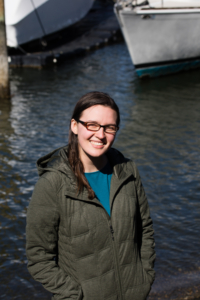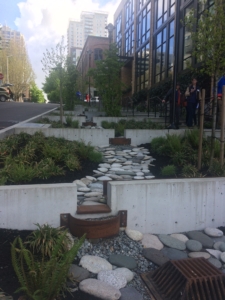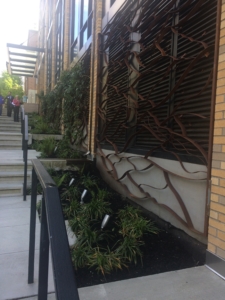CRC’s Environmental Management Career Development Program works with the Chesapeake Bay Program partnership to offer three-year staff opportunities for science, management, and policy graduates as the partnership works to protect and restore the Chesapeake Bay. While the CRC Staffers provide critical support to the Chesapeake Bay Program, their time is also spent exploring their own professional interests and preparing for the next steps in their careers.
In May, CRC sent Staffer Joan Smedinghoff to Seattle, Washington to the Congress for the New Urbanism’s annual conference. As Staffer to the Chesapeake Bay Program’s communications team, Joan spends the majority of her time communicating the work of the Bay Program and its partners by telling and sharing stories about restoration projects to inform and inspire people to take their own actions. Joan also has a passion for environmental planning that she hopes to explore as she moves forward in her career and that led her to the Congress for the New Urbanism. Congress for the New Urbanism (CNU) is more than an organization. It’s a movement that according to CNU’s charter focuses its membership on the “restoration of existing urban centers and towns within coherent metropolitan regions, the reconfiguration of sprawling suburbs into communities of real neighborhoods and diverse districts, the conservation of natural environments, and the preservation of our built legacy.” We took some time to speak to Joan about her interest in this movement and her time spent at the conference.

Joan Smedinghoff, CRC Staffer for the Chesapeake Bay Program’s communications team. (Photo Credit: Will Parson, CBP)
CRC: Thanks for chatting with us, Joan! What attracted you to this conference?
Joan: CNU works to promote vibrant and walkable cities and towns that focus on mixed-use development and public transit. I tend to describe them and their members as a group of mainly planners, architects, and civil engineers that talks about environmental sustainability all the time, just without ever saying it.
I wanted to attend this conference because of my interest in all of the work that CNU and its members do, and because I am looking to pursue an urban planning-related job after my time here at the Bay Program. I majored in environmental studies in college, but went to a smaller school where there weren’t many planning courses available.
CNU conferences are very place-based. They go out into the city and look at how different practices have been implemented, and talk with the people and organizations involved in making them happen. The conferences also focus on building skills, hosting workshops, and learning from case studies.
I thought it would be a great opportunity to attend this year in order to absorb that information, attend the core training sessions, and learn about the practical applications of New Urbanism. This conference would be a great opportunity to learn about New Urbanism, see how it is being practiced around the country (and particularly in Seattle), and get a base level of training.

During a conference tour, Joan had the opportunity to visit several innovative stormwater projects like these cascading rain gardens. (Photo credit: Joan Smedinghoff, CRC)
CRC: What was your favorite part of the conference?
Joan: There was so much I liked about this conference! Every session I went to was engaging and taught me something different. One part that stands out was a tour I took around a few of the downtown neighborhoods. The title of the tour was “How Green Stormwater Infrastructure Can Help Urban Neighborhoods Thrive,” and in our tour around the neighborhoods we saw some really innovative stormwater projects that also tackled other issues for those areas. One turned an extremely steep sidewalk into a stairs over a cascading set of rain gardens. On another block, they narrowed the street, put a rain garden in the parkway, along with some outdoor tables and chairs, and also removed the street curb to highlight the pedestrian access to the street.

During a conference tour, Joan had the opportunity to visit several innovative stormwater projects like these living wall installations. (Photo credit: Joan Smedinghoff, CRC)
CRC: What did you learn at the conference that you hope to tie into your work with the Bay Program or your future career?
Joan: The one thing that I saw over and over at CNU were the obvious connections between the kind of work that everyone at the conference was doing, and the goals of the Bay Program. The words and messages they use are different—instead of talking about conserving land for habitat, they talk about reducing sprawl—but in the end many of the goals are the same: preventing development in certain areas, increasing tree canopy, controlling stormwater runoff, and so much more.
In terms of my future career, this conference really helped me see all the ways that I could be involved in this kind of work, and inspired me to look more seriously at career in a planning-related field. I also saw how my environmental background could really be an asset, and help me better and more clearly connect the work that CNU and its members do with the work that Bay Program partners are doing.
For additional information regarding CRC’s Environmental Management Career Development Program, please contact Melissa Fagan, Environmental Management Career Development Program Coordinator at faganm@chesapeake.org. Funding for CRC’s Environmental Management Career Development Program is provided through a cooperative agreement with the US EPA.
